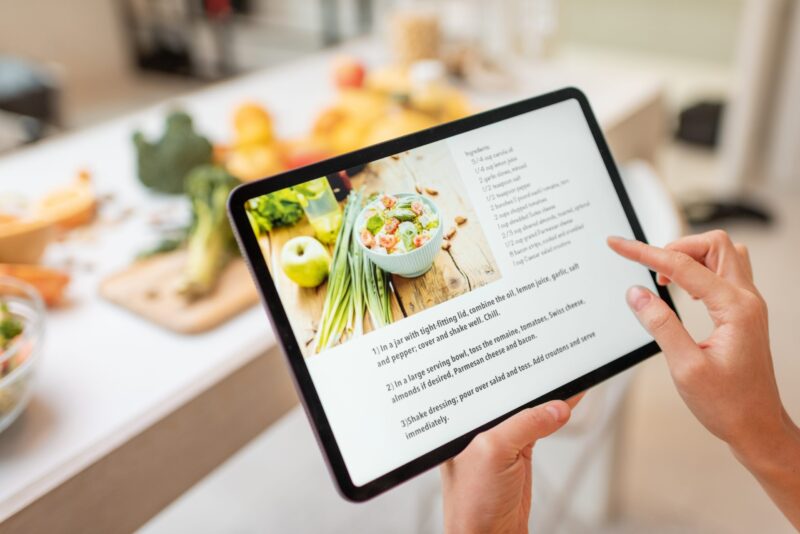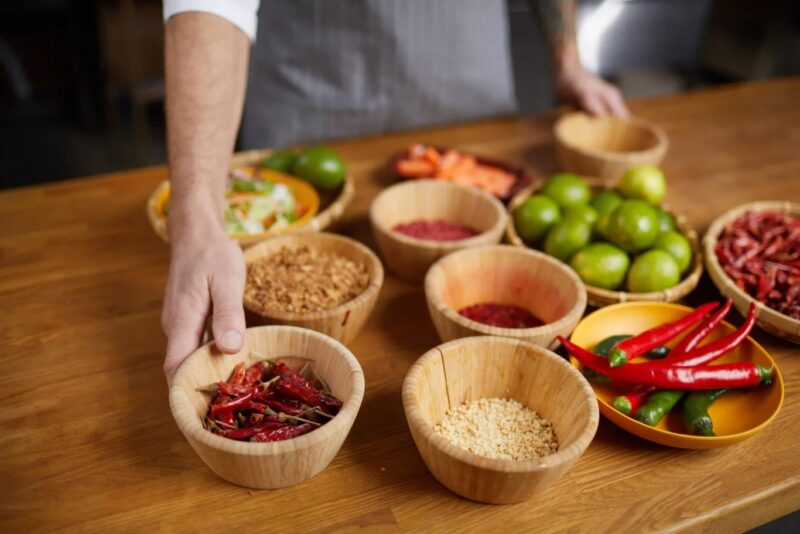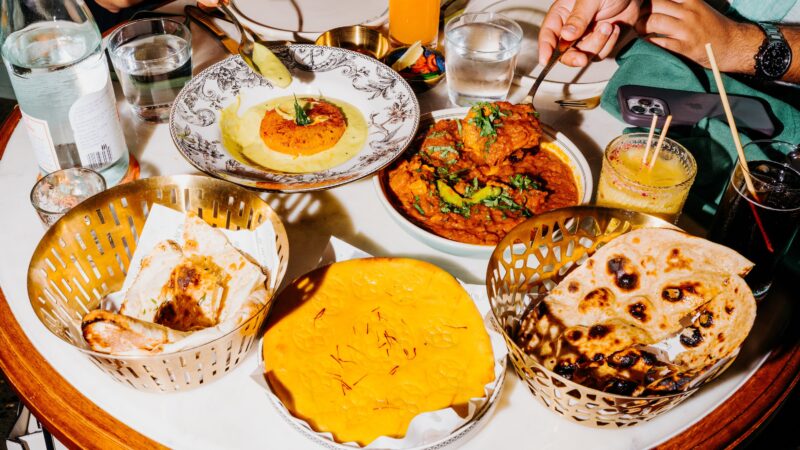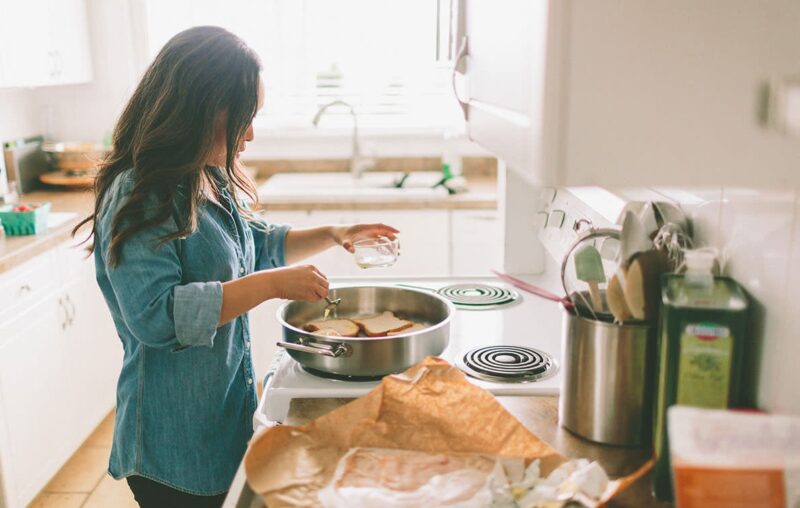Bad instructions, missing ingredients, and made-up methods can ruin your travel meals before they even start. If you’ve ever followed a recipe you found online only to end up with a half-baked mess, you’re not alone. The internet is packed with food content, but not all of it holds up when you’re miles from home and counting on something dependable.
Travelers who cook on the road, stay in rentals, or prepare meals during longer stays need more than pretty photos—they need trustworthy instructions. Here’s how to tell when an online recipe is a ticking time bomb.
Key Highlights
- Recipe blogs often prioritize traffic over accuracy.
- Photos may hide steps that aren’t mentioned in the text.
- Ingredient lists may omit key details or prep instructions.
- Star ratings don’t always reflect real experiences.
- Some recipes are auto-generated with no testing involved.
- There are tools to help spot AI-generated recipes before trusting them.
Recipe Layout Tells You Everything

A solid recipe always starts with structure. Look for ingredient lists at the top, followed by steps that are short, specific, and in order. A recipe that forces you to scroll through long paragraphs just to find the oven temperature is not meant to help you cook.
Recipes that mix personal stories into the instructions may confuse beginners. There’s nothing wrong with storytelling in food blogs, but when the instructions are buried under four paragraphs about a childhood memory, clarity suffers.
Red flags include:
- Instructions not matching ingredient amounts.
- Cooking times not adding up.
- Recipes with vague terms like “a handful” or “a dash” without any measurement guidance.
Why Content Quality Tools Matter
Many food blogs today use automation tools or artificial intelligence systems to pump out fast content. Some of those pages rank high in search results even though no human has ever cooked the recipe.
That’s where tools like Zero GPT come in. This site offers content analysis powered by deep learning systems trained to detect machine-written text. It helps readers verify if an article was likely generated by a machine rather than written and tested by a real cook. If a recipe seems robotic or generic, copy and paste the instructions into the detector before trusting your ingredients to it.
Ingredient Lists That Don’t Add Up

Reliable recipes list every component clearly. That means:
- Full quantities (in grams, cups, or tablespoons).
- Any pre-cooking (sifted flour, softened butter).
- Specific brand notes or type clarifications (e.g., full-fat yogurt vs. low-fat).
If a recipe says “1 onion” without mentioning size, or “cheese” without any type, it leaves too much to guess. This matters even more when cooking abroad, where available ingredients may vary.
Watch for unnecessary extras too. Some sites bloat their recipes with irrelevant ingredients to rank for more keywords. If you see an odd list of spices with no mention of their use in the method, that’s not a feature—it’s padding.
Common Ingredient Traps
- “Optional” ingredients that clearly affect flavor or texture.
- Unexplained substitutions or alternatives without ratios.
- No allergen or dietary warnings.
If you’re preparing food in unfamiliar places, bad ingredient info leads to more than kitchen disasters—it can trigger allergies or waste your money.
Cooking Times That Ignore Reality

Fake recipes love round numbers. “Bake for 30 minutes,” “simmer for 10,” “rest for 5.” The truth is, no real kitchen works on generic time blocks.
Good recipes adjust for:
- Type and size of equipment (gas vs. electric oven).
- Local conditions like humidity or altitude.
- Ingredient temperature (room-temp eggs vs. fridge-cold ones).
If a page ignores all of that, it wasn’t written for someone who actually plans to cook. Skimming over time details is a sign the recipe hasn’t been tested—or was created by artificial intelligence with no hands-on experience.
Photos That Mislead or Hide
Beautiful images are often a trap. A common tactic is showing ingredients that aren’t listed or finished products that don’t match the written instructions.
Be suspicious if:
- The image features garnishes never mentioned in the recipe.
- You see prep steps (like marinating or searing) that aren’t written.
- The photos are too staged and look more like stock images than real food.
Reverse image search can reveal reused or purchased images. If multiple sites show the same dish with different methods, you’re probably looking at copied content dressed up to rank higher.
How to Evaluate Images
- Check lighting. Real kitchen photos are usually not perfect.
- Look for steam, spills, or crumbs—signs of actual cooking.
- Examine color consistency between steps and final dish.
Photos should support the recipe, not mislead or distract. When they feel too clean, you’re likely seeing content made for clicks, not cooks.
Comments and Ratings That Don’t Add Up

Many recipe sites allow user reviews. But fake or planted comments are common, especially on commercial blogs or affiliate-heavy sites.
Here’s how to spot suspicious comment sections:
- Dozens of 5-star reviews with no photos or notes.
- Repetition in phrasing (e.g., “This was amazing! Loved it!” across multiple posts).
- No mention of actual cooking experience or outcome.
Genuine feedback usually includes specifics. Real people say “I used almond milk instead of cream” or “baked 10 minutes longer because my oven runs cool.” Without those signs, the ratings may not reflect the recipe’s true results.
Trusting Real Voices
Stick with sites that moderate their comments. Look for authors who respond, offer tips, or accept critique. This kind of engagement proves someone is managing the content, not just pumping out recipes for traffic.
Recognizing Auto-Generated Instructions
Some recipe sites use artificial intelligence to create generic versions of existing content. You can tell by the way they sound.
Look for:
- Repetitive phrases like “now enjoy your delicious dish.”
- Instructions that state the obvious or give zero real value.
- Lack of variation in sentence structure or tone.
If you see the same intro and outro across multiple pages with minor edits in the middle, the entire recipe may be part of a template. That’s where a detector tool becomes useful again. AI detectors help uncover whether instructions were likely written by a person or a machine using artificial intelligence. It checks structure, phrasing, and flow, giving you a better sense of content reliability before you try the dish.
Safe Recipe Sources Worth Trusting

Stick to sites with the following:
- Author bios that include cooking background.
- Clear attributions or references to test kitchens.
- Videos that show the process in full.
- Downloadable or printable versions with time estimates and prep details.
Trusted names in cooking may take more time to read, but you’ll avoid wasting groceries on unreliable instructions.
Final Tips for Travelers Cooking Abroad
Travelers face special challenges when prepping food. New appliances, local markets, and time pressure make it harder to improvise. To stay safe:
- Bookmark 3–4 reliable food blogs before the trip.
- Screenshot essential steps in case of bad Wi-Fi.
- Test one recipe at home before taking it on the road.
- Translate or print ingredient lists if traveling somewhere unfamiliar.
Good travel meals start with good recipes. And good recipes come from trusted sources—human, tested, transparent.

